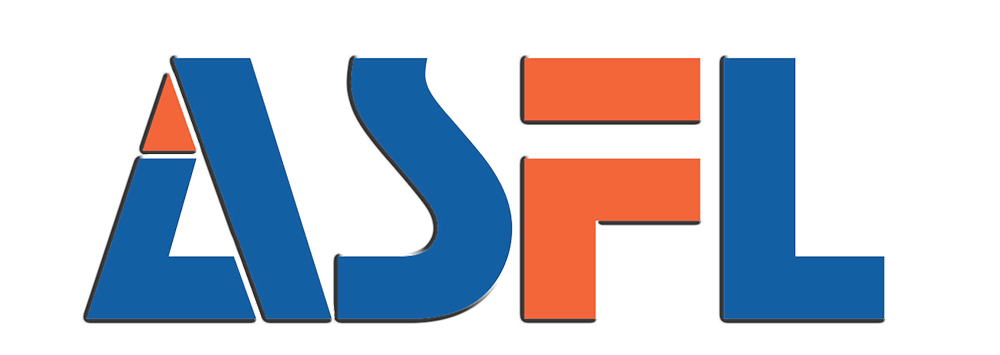The Critical Role of Precision in Liquid Filling Machine Performance
Understanding Fill Volume Accuracy in Liquid Filling Machines
When talking about fill volume accuracy, we're basically looking at how close a liquid filling machine gets to putting exactly what it's supposed to into each container. The thing is, even tiny mistakes matter a lot in production. Take something like plus or minus 1% deviation - that might not sound bad until you realize what happens when scaled up. Imagine getting just half a milliliter wrong on every single bottle out of 10,000 produced. Suddenly we're talking about losing five whole liters of product somewhere down the line. Modern equipment has made huge strides though. Some advanced systems can hit around 99.9% accuracy these days thanks to fancy flow meters and those weight-based sensors they've been installing lately. This kind of precision isn't just good for business bottom lines either; most manufacturers need this level of control to meet those strict ISO 9001 requirements and pass FDA inspections without issues.
How Precision Impacts Product Consistency and Regulatory Compliance
Getting things just right matters a lot when it comes to keeping products consistent and staying within what regulations demand. Take the drug manufacturing world for instance, even small errors in how much goes into each container can lead to recalls costing around seven hundred forty thousand dollars according to Ponemon's research from last year. And in food processing plants, putting too much product in containers isn't just wasteful but actually raises the chance of getting contaminants into what people eat. The best equipment out there manages to keep variations down to about plus or minus 0.25 percent. This kind of accuracy helps companies follow those strict FDA rules about keeping track of electronic records and making sure everything can be audited properly later on.
Linking Automation and Precision in Liquid Filling Machines
Modern automated liquid filling setups typically rely on servo driven pumps paired with PLC controls for consistent results even when running over 400 bottles each minute. According to Packaging World from last year, these machines cut down on mistakes made by people by almost 90% compared to what happens during manual filling processes. Plus operators can tweak settings instantly through those HMI screens right at the machine itself. When connected to the factory's SCADA network, everything gets monitored from one central location. This means quality stays pretty much the same no matter which production line is running at any given time.
Data Insight: 98.7% of Recalls Linked to Inaccurate Fill Volumes (FDA, 2022)
| Precision Metric | Industry Impact | Compliance Threshold |
|---|---|---|
| Fill Volume Error | 98.7% recall cause | 1% variation (FDA) |
| Batch Consistency | 23% waste reduction | 99.5% uniformity |
| Audit Compliance | 92% faster approvals | 100% traceability |
FDA enforcement data shows that 623 of 631 pharmaceutical and food recalls were linked to fill inaccuracies, highlighting the need for inline checkweighers that automatically reject underfilled or overfilled containers before labeling.
Advanced Technologies Driving Precision in Liquid Filling Machines
High-Speed Automated vs. Manual Liquid Filling Systems
Automated systems achieve 98.7% fill volume accuracy, outperforming manual methods by 1318%. Using servo-driven pumps and dynamic flow meters, they maintain precision at speeds over 300 containers per minute. Real-time detection of viscosity changes allows these systems to adjust nozzle flow rates within 0.05 secondsessential for temperature-sensitive products like vaccines.
Smart Controls and IoT Integration in Liquid Filling Machines
IoT-enabled machines integrate 1215 sensors per filling head to monitor pressure, temperature, and fill volume. This data feeds into centralized control systems that automatically correct deviations, maintaining fill accuracy within ±0.3% of target values. When linked with ERP software, these systems fulfill 92% of regulatory documentation needs without manual input.
Industrial IoT (IIoT) for Real-Time Monitoring and Analytics
IIoT platforms analyze more than 150 data points per second across filling lines, using predictive algorithms to detect anomalies before they lead to defects. This continuous monitoring reduces calibration drift by 63% compared to traditional scheduled maintenance.
Case Study: 40% Reduction in Errors After IIoT Integration in a Pharmaceutical Line
A pharmaceutical manufacturer using IIoT-enabled filling machines reported:
- 40% fewer overfill and underfill incidents
- 22% faster batch changeovers due to automated recipe switching
- $280,000 in annual savings from reduced material waste (PDA, 2023)
The system's machine learning component reduced false alerts by 75% within six months, demonstrating how adaptive AI enhances both precision and operational efficiency.
Sensors and Vision Systems: Ensuring Real-Time Precision Control
Role of Sensors and Cameras in Real-Time Fill Level Monitoring
Today’s liquid filling equipment relies on a mix of ultrasonic tech, laser sensors, and weight measurement systems to keep track of how much product goes into each container, often handling over 300 units every single minute. The data collected gets sent straight to those fancy servo pumps, which can maintain around half a percent accuracy even when production lines are running flat out. For better control, many machines now come equipped with vision systems too. High res cameras spot where the liquid stops in transparent bottles, and infrared tech checks for bubbles or foam in fizzy drinks. According to findings from the latest Sensor Tech report released in 2024, manufacturers who combined these different sensing methods saw their filling mistakes drop by nearly two thirds compared to old fashioned weight based systems alone.
Detecting Fill Deviations Before Sealing to Prevent Waste
Vision-guided rejection systems intercept non-conforming containers within 0.4 seconds, preventing sealing and downstream issues. This pre-emptive detection is crucial for pharmaceutical batch consistency under FDA regulations. In food production, millimeter-level accuracy prevents both product giveawaysaving up to $18,000 annually per lineand underfills that could trigger penalties.
Controversy Analysis: Risks of Over-Reliance on Vision Systems Without Calibration
According to the Machine Vision in Manufacturing Study, around 73% of manufacturers have implemented vision systems in their operations. But here's where things get interesting - roughly 30% don't bother with daily calibration routines. When this happens, products that should be rejected often pass inspection because fill levels might differ by plus or minus 3%. That's way beyond what's acceptable in pharmaceutical manufacturing standards. And let's not forget about those camera lenses slowly drifting out of alignment as they run nonstop through production shifts. We're talking about measurement errors creeping in at about 0.2mm per hour from thermal changes alone. This makes a pretty strong case for moving away from manual calibration toward automated systems that handle these adjustments without human intervention.
AI and Predictive Intelligence in Liquid Filling Machine Optimization
AI-Powered Process Optimization for Consistent Fill Performance
AI analyzes real-time variables such as viscosity, container geometry, and flow dynamics to maintain consistent fills. Machine learning algorithms adjust fill nozzles 80120 times per second, sustaining ±0.5% volume accuracyeven with challenging formulations like nano-emulsions or shear-sensitive biopharmaceuticals.
Predictive Maintenance Using AI to Reduce Machine Downtime
AI-powered vibration analysis and thermal imaging detect bearing anomalies 7296 hours before failure. According to a 2023 predictive maintenance study, this approach reduces unplanned stoppages by 62% in high-speed lines, helping mitigate the $220 billion annual cost of downtime in pharmaceutical manufacturing.
Machine Learning Models Dynamically Adapting Fill Parameters
Self-optimizing neural networks continuously adapt to:
- Ambient temperature shifts affecting liquid density
- Fluctuations in line speed
- Nozzle wear altering flow characteristics.
These models sustain 99.3% fill accuracy through autonomous adjustments, a key requirement for ISO 15378-certified packaging operations.
Data Insight: 30% Increase in Operational Efficiency With AI Integration
A 12-month analysis of 37 production facilities showed AI-optimized filling machines delivered:
| Metric | Improvement |
|---|---|
| Material waste | 41% reduction |
| Changeover speed | 58% faster |
| Energy consumption | 29% lower |
| These gains result from AI's ability to simultaneously optimize over 28 interdependent variables, far beyond the capacity of manual or rule-based systems. |
Balancing Quality Control and Process Efficiency in Industrial Applications
Ensuring quality control through precision fill accuracy
Today's liquid filling machines hit around 0.5% accuracy for fill volumes thanks to those fancy servo pumps and laser sensors, which makes all the difference when it comes to product quality standards. The FDA did some research back in 2022 and found that nearly all (like 98.7%) pharmaceutical recalls were actually caused by tiny fill errors below 2%. That shows just how small mistakes can snowball into big regulatory problems down the line. These machines also have these closed loop systems that fix fill issues in about 15 milliseconds. To put that in perspective, humans basically can't even notice something wrong until way after that time frame has passed.
Balancing high throughput rates with fill volume precision
Manufacturers optimize throughput without sacrificing accuracy through adaptive operating modes:
| Parameter | High-Speed Mode | Precision Mode |
|---|---|---|
| Cycle time | 120 bottles/min | 90 bottles/min |
| Accuracy tolerance | ±1.5% | ±0.25% |
| Ideal application | Water | Vaccines |
Adaptive algorithms switch modes based on real-time viscosity data, maintaining a mean accuracy of 99.4% across diverse production runs.
Industry Paradox: Navigating the speed vs. precision trade-off
Contrary to traditional assumptions, next-generation filling systems overcome the speed-precision trade-off through innovations such as:
- Parallel filling stations with individual load monitoring
- Predictive pressure compensation for turbulent fluids
- AI-driven cycle optimization that cuts idle time by 37%
A 2023 industry benchmark revealed that advanced systems simultaneously increased speed by 19% and improved accuracy by 32% in cosmetic filler applications, redefining performance expectations.
FAQ Section
-
Why is precision important in liquid filling machines?
Precision ensures product consistency, regulatory compliance, and reduces product waste and recalls. -
How do automated liquid filling machines maintain accuracy?
They use servo-driven pumps, dynamic flow meters, and integrate IoT systems to monitor and adjust filling parameters. -
What role does AI play in optimizing liquid filling machines?
AI helps in process optimization, predictive maintenance, and dynamic adaptation of fill parameters for consistent performance. -
What are the risks associated with relying on vision systems?
Over-reliance without proper calibration can lead to errors exceeding acceptable standards.
Table of Contents
- The Critical Role of Precision in Liquid Filling Machine Performance
- Advanced Technologies Driving Precision in Liquid Filling Machines
- Sensors and Vision Systems: Ensuring Real-Time Precision Control
- AI and Predictive Intelligence in Liquid Filling Machine Optimization
- Balancing Quality Control and Process Efficiency in Industrial Applications
- FAQ Section





